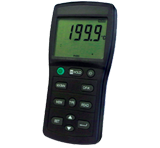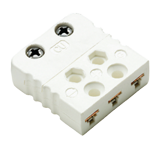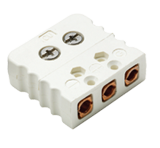Bayonet RTD Pt100 - Screw on Spring Style (Type 71B)
Plastics Industry RTD Pt100 Sensors
Related Products
RTD Pt100 Indicator
Related Products
Miniature Socket - Three Pin
Related Products
Standard Socket - Three Pin
Suitable for plastics machinery and general purpose applications, these bayonet Pt100 sensors are supplied with a 200mm spring on which an industry standard one slot adjustable bayonet cap fitting is screwed onto for fine positioning on site. These assemblies are available in tolerance classes B or A and the sensing tip is incorporated within an 18mm long x 4.7, 6.0 or 8.0mm diameter (specify as d1) tube which the stainless steel braided leads are sealed into. Available as a 3 or 4-wire configuration.
Frequently Asked Questions
- What is an RTD Pt100 sensor, and how does it work?
An RTD (Resistance Temperature Detector) Pt100 sensor measures temperature by detecting changes in electrical resistance. The "Pt" stands for platinum, the material used in the sensing element, and "100" refers to the resistance value of 100 ohms at 0°C. As the temperature changes, the resistance of the platinum element varies, allowing for accurate temperature measurements. - How accurate are RTD Pt100 sensors?
RTD Pt100 sensors offer high accuracy and stability, with industrial-grade elements ranging from Class B (±0.3ºC at 0ºC) to Class A (±0.15ºC at 0ºC). Higher precision options, such as 1/10 class elements, provide an accuracy of ±0.03ºC at 0ºC. These sensors are widely used in industrial, laboratory, and scientific applications requiring high precision. Additionally, we offer calibration services in our UKAS accredited laboratory. - What is the temperature range for RTD Pt100 sensors?
The temperature range of an RTD sensor depends on factors such as the construction, sheath material and insulation used in the construction. While some platinum elements can withstand temperatures up to 850°C, the overall sensor design will limit the maximum temperature rating. Please check the product specifications for the exact temperature range based on the sensor’s construction. If you need any advice, our engineers are happy to assist!

 France
France Germany
Germany Spain
Spain Netherlands
Netherlands Italy
Italy Hungary
Hungary United States
United States Australia
Australia
